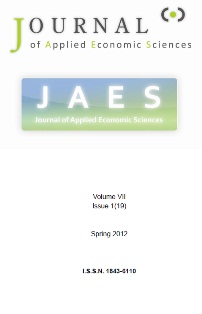EVALUATION OF SMALL SAMPLE ESTIMATORS OF OUTLIERS INFESTED SIMULTANEOUS EQUATION MODEL: A MONTE CARLO APPROACH
EVALUATION OF SMALL SAMPLE ESTIMATORS OF OUTLIERS INFESTED SIMULTANEOUS EQUATION MODEL: A MONTE CARLO APPROACH
Author(s): Adedayo Adepoju, John OlaomiSubject(s): Economy
Published by: Reprograph
Keywords: outlier; small sample; simultaneous equations; autoregressive error terms.
Summary/Abstract: In practice, data collected in a broad range of applications frequently contain one or more atypical observations called outlier. A single outlier can have a large distorting influence on a classical statistical method that is optimal under the assumption of normality or linearity. Many estimation procedures proposed by researchers to handle simultaneous equation models are based on the assumptions that give little consideration to atypical data, thus the need to investigate the distorting effects of outliers in simultaneous equations estimation methods. In this study, we compare the performance of five estimators (OLS, 2SLS, 3SLS, GMM and W2SLS) of simultaneous equations model parameters at small sample sizes (n) 15, 20 and 25; first order autocorrelation levels (ρ) 0.3, 0.6 and 0.9 of the error terms, when the series are perturbed at zero, one and two times. The estimators are adjudged using the minimum criteria of Bias, Variance and RMSE criteria on the 135 scenarios, each replicated 10,000 times. Identical results were obtained for the 2SLS and W2SLS methods since there are no restrictions on the parameters. The system methods clearly performed better than the single equation counterparts. Generally, the estimates obtained for the just identified equation are better than those of the over identified counterpart. Surprisingly, the ranking of the various techniques on the basis of their small sample properties does not reveal any distinguishable feature according to whether there is outlier(s) in the data or not and at the different level of correlation, but all the estimators behave asymptotically. On the BIAS criterion, the best method is OLS in the just identified equation, followed by 3SLS in most cases especially where the pollution level is zero for all the three autocorrelation levels considered. The GMM and 2WSLS struggled for the third and last positions. However, in the over identified case, 3SLS is leading closely followed by GMM in most cases (when rho is 0.9 for all sample sizes considered) and OLS in few other cases (especially at rho = 0.3 and 0.6 and for N = 20 and 25 with single/double pollution levels), it is expected that we would be able to identify or suggest the best method to use when we have the scenario depicted above.
Journal: Journal of Applied Economic Sciences (JAES)
- Issue Year: VII/2012
- Issue No: 19
- Page Range: 8-16
- Page Count: 9
- Language: English

